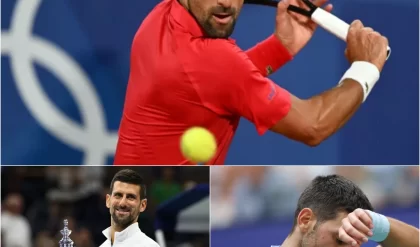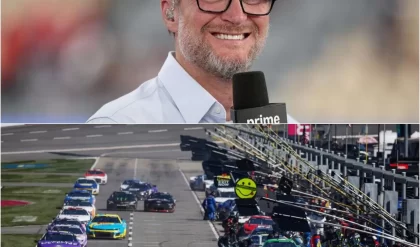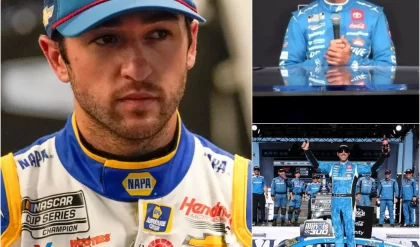Kyle Larson’s recent dominance at Bristol Motor Speedway has reignited a heated debate within NASCAR, as the Hendrick Motorsports star delivered a provocative statement about his intentions in the Xfinity Series. Fresh off a near-sweep of the weekend—winning the Cup and Xfinity races while finishing second in the Truck Series—Larson didn’t hold back. His comments, made on Kevin Harvick’s Happy Hour podcast, revealed a desire to “embarrass” both NASCAR and its younger drivers by dominating lower-tier races. This bold stance has sparked discussions about the sport’s rules limiting Cup drivers in developmental series, raising questions about fairness, competition, and the future of NASCAR’s talent pipeline.

Larson’s Bristol performance was nothing short of spectacular. Leading 411 of 500 laps in the Cup Series race, he secured his 31st career victory and third at Bristol, with an average speed of 100.746 mph—the fastest Bristol race since 1977. In the Xfinity Series, he led 277 of 300 laps, showcasing his mastery of the track. However, his victories were overshadowed by his candid remarks about wanting to expose the gap between Cup veterans and Xfinity’s rising stars. “I want to embarrass NASCAR a little bit,” Larson admitted, criticizing rules that restrict Cup drivers to just five Xfinity and Truck Series races per season. These regulations, often dubbed the “Kyle Busch rule,” were implemented in 2020 to give younger drivers a chance to shine, but Larson argues they’ve lowered the competitive bar.

The Hendrick Motorsports driver believes his participation in Xfinity races serves as a benchmark for emerging talent. By securing massive leads—sometimes as much as 10 seconds—he aims to push younger drivers to improve. “When those young guys can compete with Cup guys, they’re better suited for the Cup Series,” Larson explained. Former Cup champion Kevin Harvick echoed this sentiment, recalling how racing against 20 or more Cup drivers in Xfinity events provided invaluable experience. Yet, Larson’s approach has divided fans and insiders. Is this tough love necessary for the sport’s growth, or does it undermine the development of new talent?

Larson’s frustration stems from recent experiences, including a heartbreaking Xfinity loss at Homestead-Miami, where a late caution cost him a 15-second lead, and chaotic racing at Martinsville, where aggressive moves by younger drivers drew criticism. These incidents fueled his determination to make a statement at Bristol, where he not only dominated but also halted Denny Hamlin’s bid for a third consecutive Cup win. The rivalry between Larson and Hamlin added another layer of drama, with Larson gleefully noting his role in stopping Hamlin’s streak, prompting a fiery response from Hamlin on his Actions Detrimental podcast. Despite the verbal sparring, Hamlin acknowledged Larson’s flawless performance, highlighting the intense competition between two of NASCAR’s top contenders.

The broader issue Larson’s comments raise is whether NASCAR’s restrictions on Cup drivers have gone too far. Kyle Busch, who once dominated Xfinity with 15 or more starts per season, has struggled since the limits were imposed, winning only seven Cup races since 2020 compared to five in 2019 alone. Meanwhile, drivers like Ty Gibbs, who excelled in Xfinity but have yet to win in Cup, illustrate the steep learning curve. Bristol’s racing dynamics further complicate the debate, with Larson’s race featuring just four lead changes—among the fewest in decades—contrasting sharply with Hamlin’s earlier 54-lead-change victory. Tire performance and track conditions, as noted by Jeff Gordon, remain ongoing challenges for NASCAR and Goodyear.
As Larson eyes future triple-header weekends, aiming to join Kyle Busch as the only drivers to sweep all three national series in one weekend, his comments have thrust NASCAR’s rulebook into the spotlight. Should Cup drivers be allowed to compete more freely in developmental series, or do the current limits foster a healthier talent pipeline? With Larson and Hamlin on a collision course for the 2025 title, the sport faces a pivotal moment in balancing tradition, competition, and growth.





